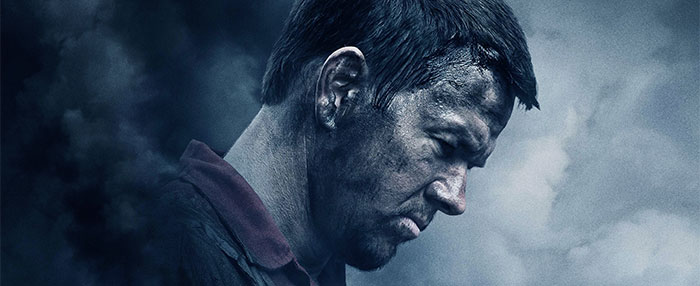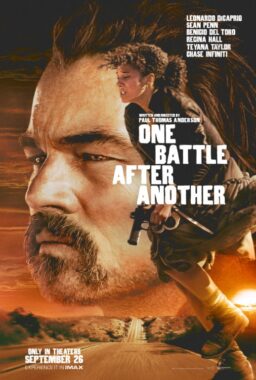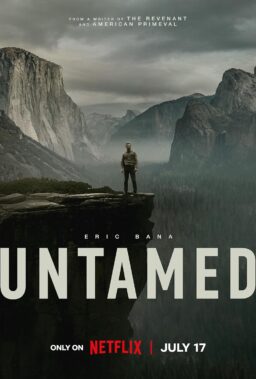It is difficult to dispute the word “hero.” The title is thrown around a lot, to the point where Stephen Colbert’s character from “The Colbert Report” would jokingly use it to describe anyone with whom he happened to agree. Its ubiquity is mostly outdated, but there is one area where “real heroes” are still undisputed, and that’s a subgenre of the movies. Films like “Deepwater Horizon,” which opened last week, mix docudrama and disaster spectacle in order to form a modern passion play that instruct us whom we should celebrate, and whom we should admonish. The new disaster cinema is effective—most entries are handsomely mounted—and yet they leave a nasty aftertaste.
Disaster films used to be fun. “The Towering Inferno,” “The Poseidon Adventure,” and “Airport 75” were an opportunity for audiences to watch talented, aging actors slum it in a story where the melodrama and special effects were beneath them. The successful “Airplane!” franchise only speaks to their impact as disposable entertainment: a genre is ready for parody when it does not take itself too seriously, and I doubt the Zucker or Wayans brothers would dare make a spoof of “Deepwater Horizon” and its ilk. Granted, there are still some fun disaster films out there. Last year’s “San Andreas” is a white-knuckle special effects picture, and with films like “2012,” Roland Emmerich defined his career with destruction and mayhem. But in terms of critical and commercial success, the important disaster films are solemn events. They are about real tragedies.
Unsurprisingly, the shift toward somber disaster films happened after the 9/11 attacks. Prior to then, disaster movies were about events that were bigger than humanity. An indicative example is Wolfgang Petersen’s “The Perfect Storm.” George Clooney and Mark Wahlberg play commercial fisherman who face an unfathomably deadly Nor’easter, and do not survive. It’s to the credit of Petersen and his cast that the fishermen are almost ancillary, like a data point for the awesome, humiliating power of nature. It sounds silly, but the point of older disaster films is the disaster itself, not the characters who succumb to it. No one went to “The Poseidon Adventure” just so they could see Shelley Winters or Ernest Borgnine. The special effects were the real attraction, so actors and audiences collectively knew the point was to have fun.

The first modern disaster film is Paul Greengrass’ “United 93.” In cinematic terms, he took a quasi-documentary style that made “Bloody Sunday” such a success, and applied it to America’s darkest day. “United 93” looks and feels like a documentary: there are no big-name actors in it—in fact, some non-actors play themselves—and Greengrass’ handheld style give the impression that we’re in the plane alongside all those doomed passengers. Greengrass’ ambitions are noble: he strips the attack of its political implications until human cost is all that’s left. The 9/11 attacks changed the world, he argues, but the passengers had no way of knowing that. They do not define themselves as heroes, even as they work to overthrow the hijackers. Our leaders would only laud them after the fact, and the immediacy of the flight is nearly overwhelming. No one who has seen “United 93” will forgets its final few minutes.
“United 93” was rightly celebrated, establishing Greengrass as a major filmmaker, but it gave permission for films to be about national tragedies while the wounds were still fresh. A more innocuous example is “The Impossible,” a J.A. Bayona film about a Spanish family who improbably survives 2004 tsunami in Southeast Asia (they’re English in the film). The perspective shift from “United 93” is still there: Bayona examines the tragedy on a human level, not an omnipotent one. There is less respect for the power of Mother Nature, and its capacity to devastate. The melodrama is meant to be a testament to power of human endurance. In an important way, the tsunami is an afterthought to the final, life-affirming moments of a reunited family. There are no escapist thrills like the pre-9/11 disaster films, but a cloying message of what matters most.
In the last couple years, there has been a noticeable shift toward the new disaster cinema. “The Finest Hours” and “The 33” are minor examples about rescue efforts for those trapped on an oil tanker and in a collapsed mine, respectively. Again, these films highlight human spirit and sacrifice, not the impressive and frightening danger that creates an opportunity for them. This does not mean “The Finest Hours” and “The 33” are bad films, although this shift in perspective leads to some strange conclusions.

If new disaster films are meant to celebrate the survivors, then Clint Eastwood’s “Sully” is pure hagiography. “Sully” recreates the forced water landing of Flight 1549 four times, each from a different perspective of those involved, and yet the film is primarily meant to celebrate the implacable instincts of its pilot hero. Eastwood creates a straw man out of a National Transportation Safety Board (NTSB) hearing, as if the crash is not dramatic enough (he also uses nightmarish footage of crashing planes in New York City to invoke the 9/11 attacks). “Sully” would be a better film if it paid more attention to the rescue workers, the air traffic controllers, or even the passengers involved, but doing so would downplay Sully as a New American Saint, and violate the cinematic purpose of repackaging our worst fears.
“Sully” is an admittedly compelling film, featuring a slow-burn performance from Tom Hanks, yet it is an outlier in Eastwood’s oeuvre. Instead, the filmmaker who traffics most in new disaster cinema is Peter Berg. With Wahlberg as his muse, Berg has a trilogy about “real-life heroes,” starting with “Lone Survivor” and continuing with “Deepwater Horizon” and “Patriot’s Day” (the latter will release this December). If “Lone Survivor” and “Deepwater Horizon” are any indication, “Patriot’s Day” will be brutal and effective. There is no desire to entertain, at least not in “The Towering Inferno” sense of it. They are relentless in their desire to inspire thrills and dread, all in service of human-story heroics. Both “Lone Survivor” and “Deepwater Horizon” end with solemn memorials for those who lost their lives—the former even uses a cover of David Bowie’s “Heroes”—as if the audience is supposed to feel bad about what befell the characters for our entertainment. This honors the victims, albeit in a cheap way, and cynically implicates his audience. By taking tragic spectacle and packaging it into consumable entertainment, it belittles the real heroes—no matter the intended purpose of Berg’s maudlin epilogues.
Disaster films, or films about fresh national wounds, do not have to be this way. Kathryn Bigelow’s “Zero Dark Thirty” explicitly deals with 9/11 and the killing of Osama Bin Laden, events that happened shortly before the film was conceived. The film is a masterpiece: it is in the recent critic survey of the BBC’s top 100 films since the year 2000, and it frankly deserves to be higher than position 57. So why does “Zero Dark Thirty” succeed while disaster films like “Sully” and “Deepwater Horizon” probably won’t make the cut in the inevitable next appraisal? Bigelow recognizes that disasters do not have answers. She declines to summarize the film’s meaning, or tell us exactly how bad we should feel for the people involved. Cinema can allow for ambiguity and uncertainty that real life cannot. New disaster films want answers, and their way of finding them is manipulative. Real-life disasters are inherently tragic, but their survivors aren’t always heroes or saints. A powerful film is memorial enough.












